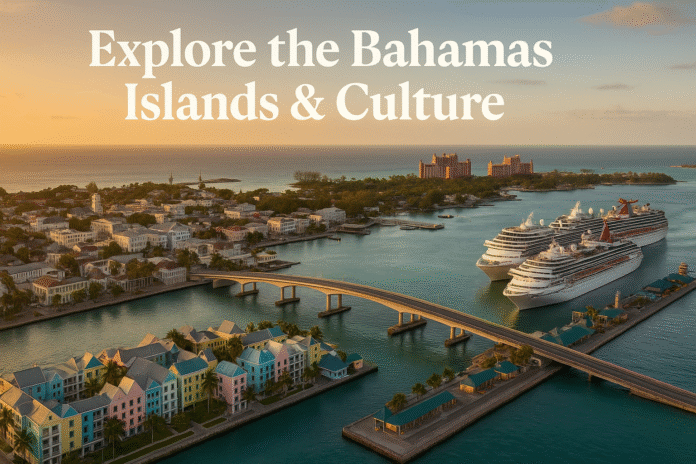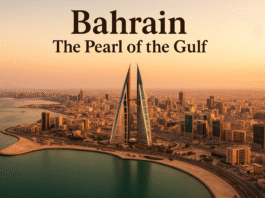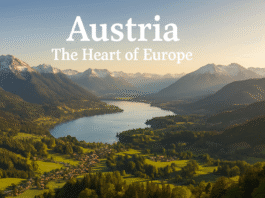Introduction
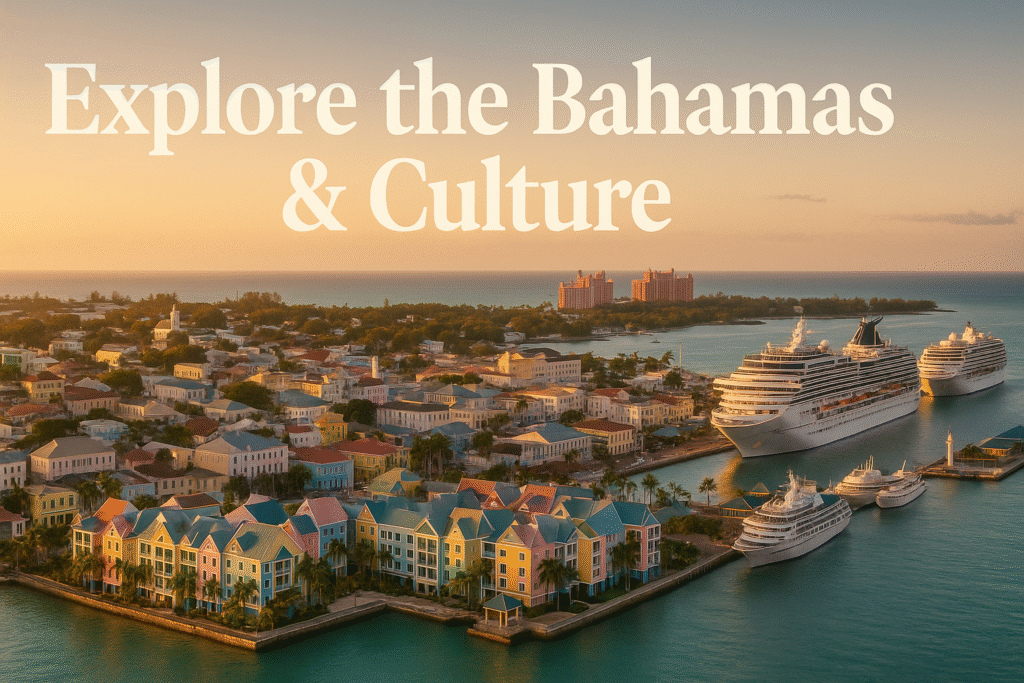
The Bahamas is a beautiful archipelago in the Atlantic Ocean. It is officially known as the Commonwealth of the Bahamas and is ranked as Country #12 in our travel series. With more than 700 islands and 2,400 cays, it boasts immaculate beaches, azure waters, a thriving cultural scene, and an extensive history. This island nation, which has been a member of the UN since 1973, is located just off the southeast coast of Florida. We offer 11 strong reasons to visit the Bahamas in this comprehensive guide, including its intriguing history, stunning natural features, and contemporary treasures.
1. Geographical Location of the Bahamas
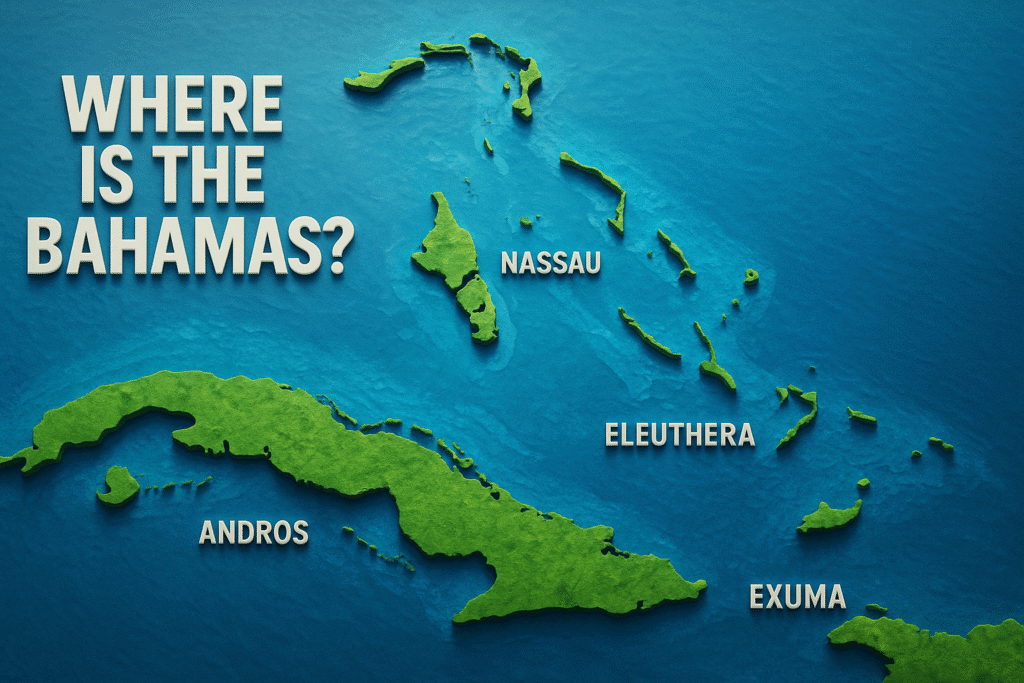
Where Is the Bahamas?
- located southeast of Florida and northeast of Cuba in the Northwest Atlantic.
- Coordinates: 71–79° W longitude and 20–27° N latitude.
Neighboring Countries & Waters
- Directly north across the Florida Strait is the United States (Florida).
- Cuba — westward
- Southeast Turks and Caicos Islands
- The Atlantic Ocean encircles it.
Key Geographic Features
- Island geography: mostly low-lying coral and limestone islands
- Key islands include Andros, Grand Bahama, Abaco, Eleuthera, and New Providence (Nassau).
- Tropical maritime climate with year-round warmth and wet (May–October) and dry (November–April) seasons
- Coral reefs, blue holes, and various ecosystems are examples of marine life.
2. A Glimpse into Bahamian History
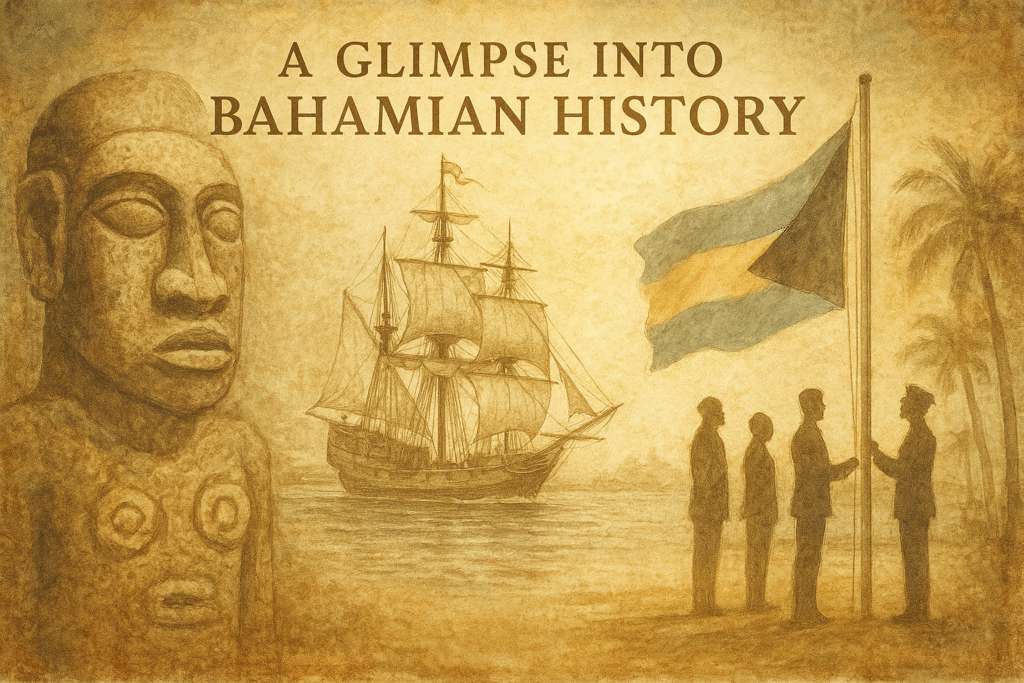
Early and Colonial History
- The Taino native groups’ Lucayan people were the first to live there.
- In 1492, Christopher Columbus landed here.
- The Lucayans were first displaced by Spanish influence, and in the 17th century, English colonisation followed.
- renowned for the Loyalist migration that influenced Bahamian society following the American Revolution
Independence and Modern Era
- became a colony of the British Crown in 1718.
- acquired internal autonomy in 1964.
- joined the UN and Commonwealth after declaring independence in 1973.
- The Bahamas are a stable democracy today with ties to the US and the UK.
3. Culture and Society of the Bahamas
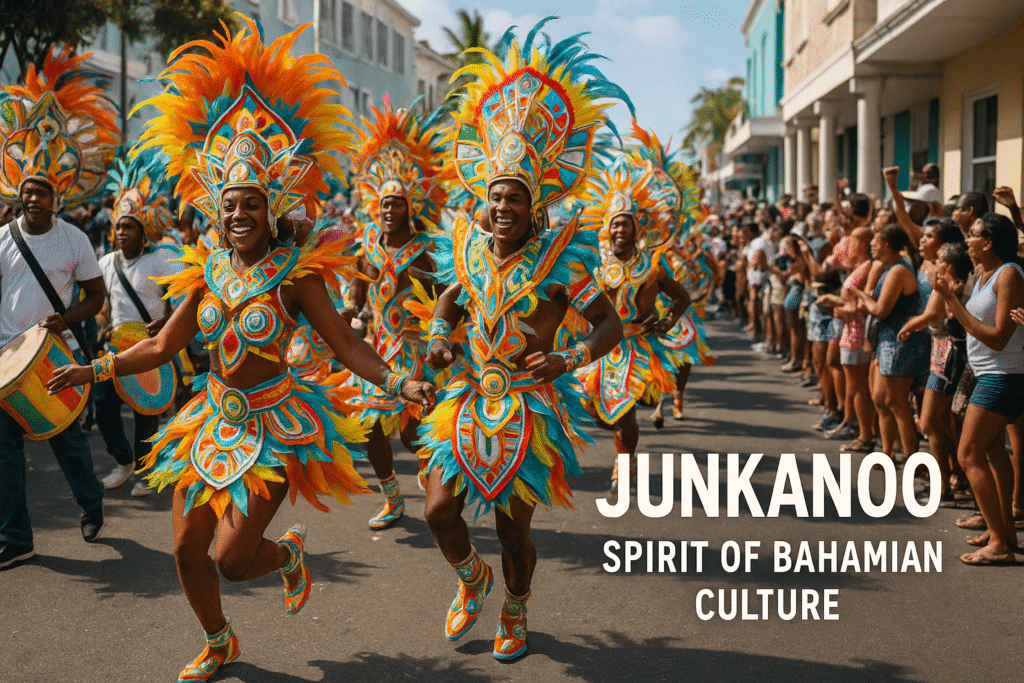
Language
- English is the official language.
- shows the strong influence of African languages and British colonialism.
Religion
- Mostly Christian, with denominations including Methodist, Anglican, Catholic, and Baptist
- Church calendar events are frequently linked to cultural festivals.
National Symbols
- The sea, sun, and resourcefulness are symbolised by the flag’s aquamarine, gold, and black colours.
- “March On, Bahamaland” is the national anthem.
- Sir Milo Butler, the first governor general of the Bahamas, is a national hero.
Music & Festivals
- renowned for Junkanoo, a vibrant Carnival-style event that features costumes, dance, and music.
- Rake-and-scrape is a type of folk music that uses an accordion and a saw.
- Festivals held annually include Bahamian Independence Day and the Bahamas International Film Festival.
4. Cuisine and Culinary Delights
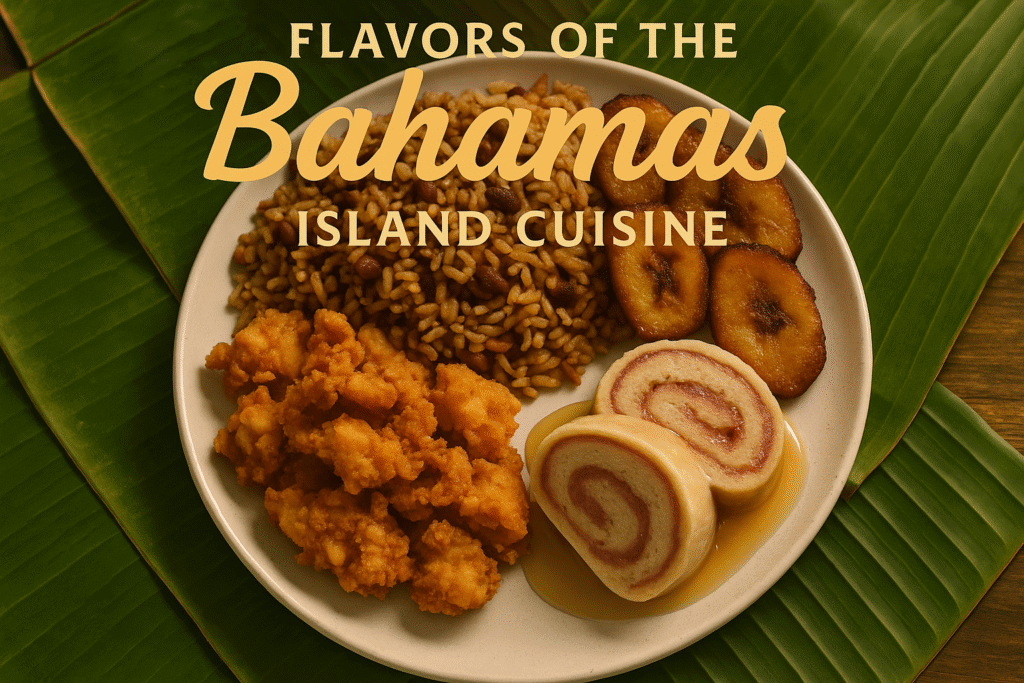
Flavors of the Islands
- largely dependent on seafood, including snapper, grouper, and conch
- Signature foods:
- Conch salad, conch fritters, and cracked conch
- Johnnycake, guava duff, and peas ‘n’ rice
- Street food: Arawak Cay fish fry events
Dining Experience
- Gourmet Caribbean-fusion food at resorts
- Local restaurants: casual, genuine settings, freshly caught fish
- Typical components include citrus, plantains, coconut, and tropical spices.
5. Economy of the Bahamas
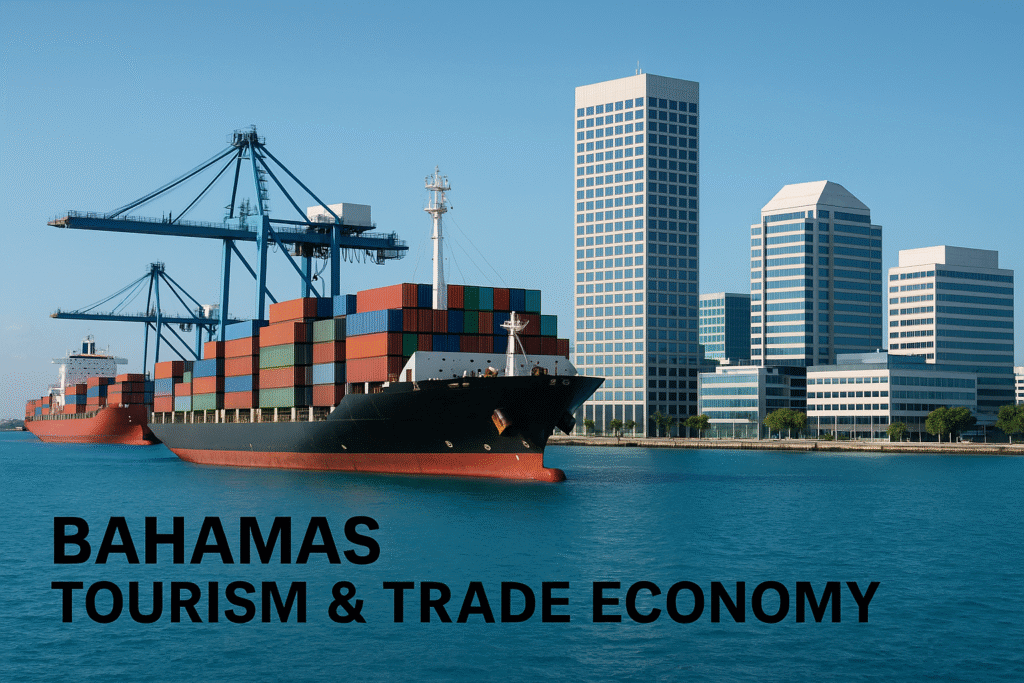
Overview
- In terms of GDP per capita, one of the wealthiest Caribbean countries
- Currency: US dollar-pegged Bahamian dollar (BSD)
- Estimated GDP for 2024: $14–15 billion USD
Key Industries
- Over 5 million tourists visit each year, and tourism accounts for 50% of GDP and jobs.
- Financial services: trusts and offshore banking
- Agriculture and fishing: small-scale exports
- Media and film production is expanding, as evidenced by recent Hollywood productions.
Trade Partners
- The main export and tourism markets are the United States, Canada, and the United Kingdom.
- Regional connections: member of CARICOM, recognised as a Caribbean Community associate
6. Major Cities & Islands
Nassau (New Providence)
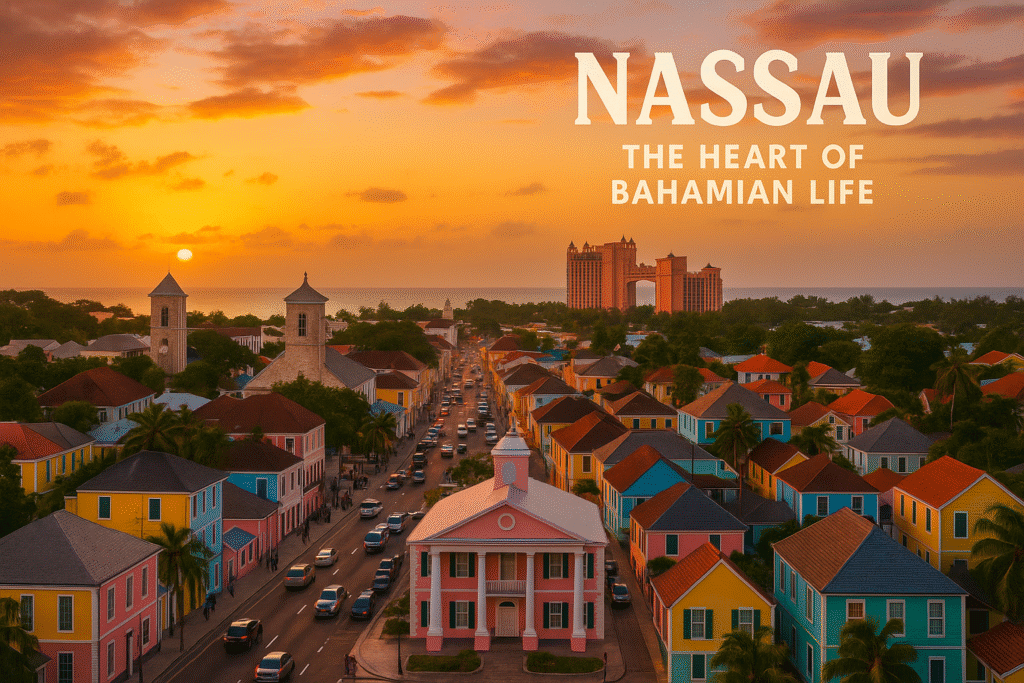
- The largest and capital city
- renowned for its colonial architecture, historic Fort Charlotte, and cruise ship harbour.
- Paradise Island’s vibrant nightlife
Freeport (Grand Bahama)
- significant centre for industry and tourism
- includes the Garden of the Groves and the Lucaya resort area.
- renowned for its boating and snorkelling
Marsh Harbour (Abaco)
- Well-known for bonefishing and sailing
- Reconstructions following Hurricane Dorian
Governor’s Harbour (Eleuthera)
- Calm beaches, quaint villages, and a rugged coastline
- includes a glass window bridge and a queen’s bath.
Andros
- The western hemisphere’s largest island and barrier reef
- renowned for ecotourism and blue holes
7. Tourist Attractions & Reasons to Visit
Beach Paradise
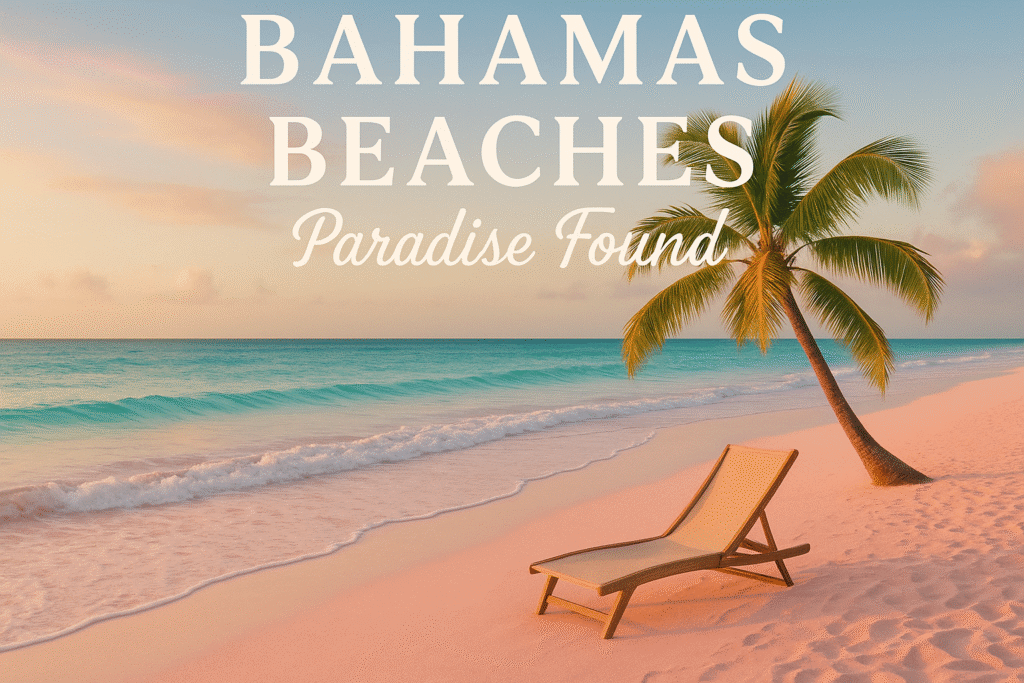
- Well-known beaches include Gold Rock Beach, Pink Sands Beach, and Cable Beach.
- Perfect for leisure and water sports, the fine sand and clear water
Marine Adventures

- Scuba diving and snorkelling close to blue holes and reefs
- Shark diving in Bimini and New Providence (tiger and bull sharks)
- Boat trips: Thunderball Grotto and Exumas swimming pigs
National Parks & Natural Sites
- The first marine protected area in the Americas is Exuma Cays Land & Sea Park.
- Mangroves and plankton caverns in Lucayan National Park
- Underwater sinkholes in Andros’ Blue Holes National Park
Cultural and Historical Sites
- At Nassau: Pirate Live, I Fought the Law! pirate museums and shows
- Traditional crafts and music at Junkanoo Cattle Ranch
- Visual art from the Bahamas is displayed at the National Art Gallery of The Bahamas.
8. Language & Education
Language Use
- The informal Bahamas Creole English dialect is influenced by African languages.
- The official language of government and education is still English.
Education
- The national curriculum follows the British model.
- The University of the Bahamas and a number of community colleges
- Over 95% of people are literate.
9. The Bahamas in the Global Arena
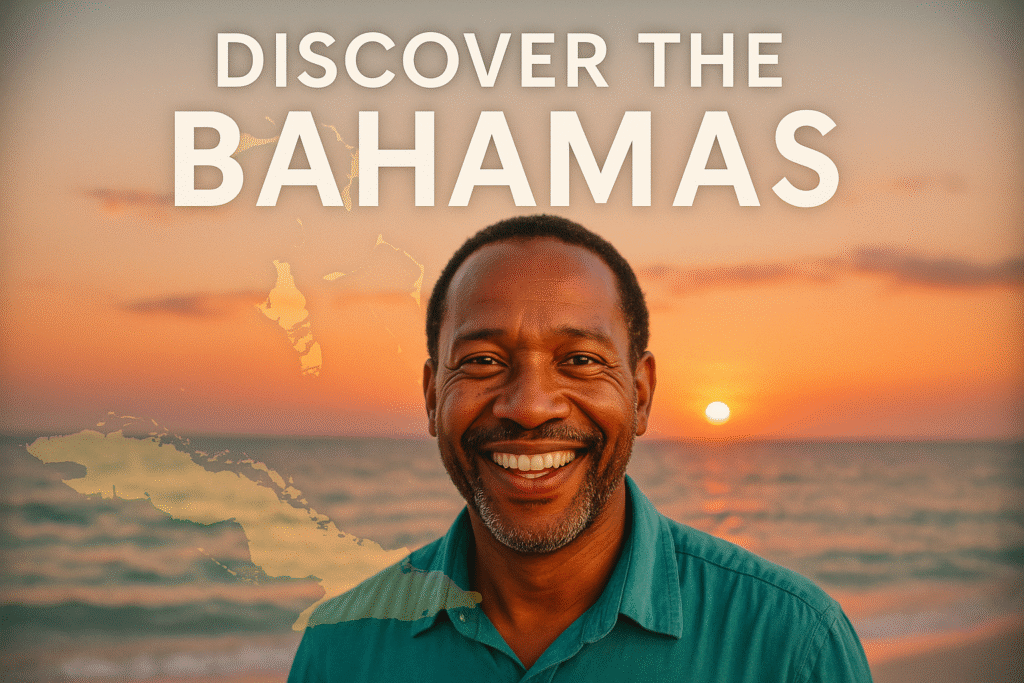
United Nations Membership
- Since 1973, the member
- Participating in CARICOM political, climate, and marine UNBALANCE forums
Regional Cooperation
- Participant in the Organisation of American States (OAS), Commonwealth, and CARICOM
Climate Leadership
- Threats from hurricanes and sea level rise
- Encourage participation in international climate talks and small island states
10. Unique & Fascinating Facts
- The Bahamian iguana is one of the few nations with aquatic reptiles.
- The “Bahamian bikini” was created by Swimsuit Fashion Capital.
- Lucayan National Park’s largest system of shallow underwater caverns
- hosted Thunderball and other James Bond films.
- Gumbo Limbo Health: ecological tourism through shipwreck diving
11. Tourism Tips & Practical Advice
Best Time to Go
- December through April is peak season; it’s drier but costs more.
- May and June are shoulder months; they are pleasant and less crowded.
Getting There & Around
- Nassau and Freeport are two international airports.
- Ferry services link nearby islands.
- Taxis and car rentals are prevalent on large islands.
- Water taxis and boats for smaller out islands
Currency and Costs
- US dollars are widely accepted, and BSD is comparable to USD.
- Tipping in restaurants is customarily between 10% and 15%.
- Many countries allow entry without a visa, though a tourist card might be needed.
Safety
- Typical tourist safety advice: stay away from poorly lit areas
- Weather risk: June through November is hurricane season.
Summary
The Bahamas is a must-visit location because of its dynamic blend of island beauty, cultural heritage, and contemporary conveniences. The Bahamas enthral in a variety of ways, from funfair celebrations like Junkanoo to historical exploration in Nassau and Andros, to renowned beaches and marine adventures. Whether you’re looking for adventure, leisure, or cultural exploration, Country #12 has it all.
Discover the Bahamas, where awe-inspiring adventure meets warm communities, rich traditions, and turquoise waters.
🔗 Useful Resources on The Bahamas
Use these reputable and official resources to learn more about The Bahamas:
🌴 Tourism & Travel
- Bahamas Official Tourism Website – Create the ideal island retreat.
- Island Vacations: Explore the Bahamas Examine every island and consult the local guide.
🏛️ Culture & Art
- Culture of the Bahamas (Wikipedia) – Discover the customs and way of life of the Junkanoo people.
- National Art Gallery of The Bahamas – Discover the exhibitions and inventiveness of the Bahamas.
📜 History & Heritage
- Lucayan Archipelago History – Early civilisations and ancient roots.
- The Bahamas – History (Britannica) – trustworthy historical chronology and benchmarks.
📈 Economy & Tourism Stats
- Economy of the Bahamas (Britannica) – GDP, sectors, and an overview of the economy.
- Tourism in the Bahamas (Wikipedia) – Tourism statistics and trends.
🌿 Environment & Nature
- LearnIndex: Bahamas Geography & Ecosystems: Climate, Biodiversity, and Beaches.
🛂 Immigration & Visa
- Bahamas Government Portal – National services, immigration forms, and entry requirements.
📚 Global Overview
- Bahamas Profile on Nations Online: Languages, Governance, Demographics, and More.
Explore Country #12 — The Bahamas — and get ready to discover paradise in every sense!

